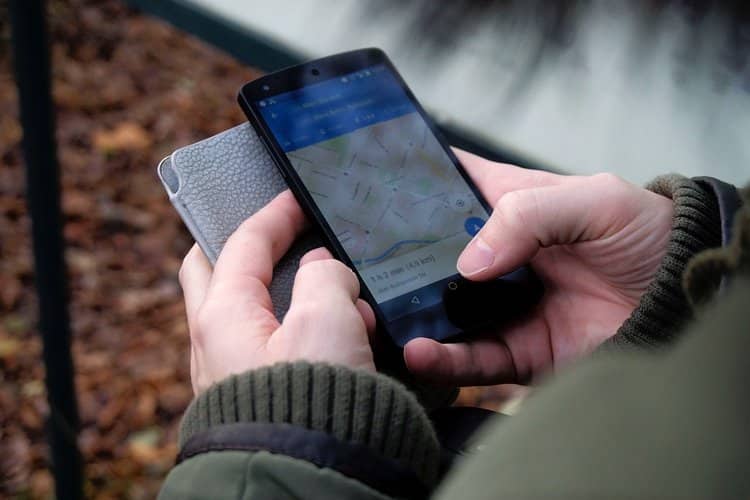The travel industry is constantly evolving, and technology has done travel planning and booking more accessible than ever before. In today’s digital age, travel apps have become a must-have for frequent travelers. They allow users to plan their trips and book accommodations and flights with a few taps on their mobile devices. As a result, travel app development has become a lucrative business.
If you plan to create a travel app, you’re probably wondering how much it will cost. Well, the truth is, there’s no one-size-fits-all answer to this question. The cost of developing a travel app depends on several factors, such as features, complexity, platform, and location of the development team. In this blog, we’ll discuss the factors affecting travel app development costs and provide an estimated cost range for building a travel app in 2023.
Types of Travel Apps
Travel apps have become increasingly popular, making travel more accessible, convenient, and enjoyable. Different types of travel apps are available in the market today, each with unique features and design considerations. Here are the most common types of travel apps:
Booking Apps
Booking apps are the most popular type of travel app. They allow users to book flights, hotels, rental cars, and other travel-related services. These apps usually integrate with various travel service providers, making it easy for users to compare prices and book the best deals. Design considerations for booking apps should focus on providing a seamless user experience, easy navigation, and a simple booking process.
Navigation Apps
Navigation apps help users navigate new places, providing detailed maps, directions, and suggestions for nearby attractions. These apps may also include features such as real-time traffic updates, public transportation information, and offline maps. Design considerations for navigation apps should focus on ease of use, accuracy, and visual clarity.
Language Translation Apps
Language translation apps are useful for travelers visiting foreign countries who may not be familiar with the local language. These apps can translate spoken and written language in real time, making communication with locals easier. Design considerations for language translation apps should focus on providing an intuitive interface, accuracy, and a wide range of language options.
Itinerary Planning Apps
Itinerary planning apps allow users to plan and organize their trips, from flights and accommodations to activities and tours. These apps may include budget tracking, trip sharing, and personalized recommendations. Design considerations for itinerary planning apps should focus on providing an easy-to-use interface, customizable options, and integration with other travel-related services.
Reviews and Recommendations Apps
Reviews and recommendations apps provide users with information and feedback from other travelers about hotels, restaurants, attractions, and other travel-related services. These apps may also include features such as user-generated content, photo sharing, and personalized recommendations based on user preferences. Design considerations for reviews and recommendations apps should focus on providing a user-friendly interface, easy navigation, and accurate and reliable information.
Factors That Affect Travel App Development Cost
Travel app development costs can vary depending on several factors. Building a travel app is a significant investment, and it’s crucial to understand the various factors that can impact the development cost. By considering these factors, you can create a more accurate estimate of the total cost of building a travel app. From the platform you choose to develop on to the features you want to include and the location of the development team, each factor can significantly impact your budget.
Let’s look at these factors and how they can affect the cost of building a travel app.
Platform
The platform you choose to develop your travel app on is one of the most significant factors that affect the development cost. Developing a travel app for iOS and Android will cost more than developing one for just one platform. This is because developing multiple platforms requires more time, resources, and effort from the development team.
Features
The cost of building a travel app depends on the features you want to include. Basic features like flight and hotel booking, trip planning, and travel guides will cost less than advanced features like AI-powered recommendations, augmented reality, and virtual reality experiences. Adding more features to your app means more time and resources spent on development, which can drive up the overall cost.
Complexity
The app’s complexity is another crucial factor affecting the cost of travel app development. A simple travel app with basic features will cost less than a complex app that requires custom development. The more complex your app, the more time, resources, and effort are required to develop it, increasing the overall cost.
Location of the Development Team
The location of the development team also plays a vital role in determining the cost of travel app development. Hiring a development team from a country with a lower cost of living will be less expensive than hiring a team from a country with a higher cost of living. This is because the cost of living affects the salary expectations of developers, and developers from countries with a higher cost of living will generally expect a higher salary.
Design
The design of your app also affects the development cost. A well-designed app will require more time and effort from the development team to drive up the overall cost. However, a well-designed app can lead to a better user experience, attracting and retaining more users in the long run.
Integration
Integrating third-party APIs and services can also affect the development cost of your travel app. Integrating APIs for payment gateways, map and location services, and social media platforms can add to the overall development cost.
Testing
Testing is essential to app development, and testing your travel app can also affect the overall cost. Testing for functionality, usability, and performance can take significant time and resources, which can drive up the overall cost.
Estimated Cost Range for Building a Travel App in 2023
The estimated cost of developing a travel app in 2023 can vary depending on the factors mentioned earlier. Based on the above factors, the estimated cost of developing a travel app ranges from $30,000 to $500,000. However, it’s essential to note that these are just estimated costs, and the actual cost can vary based on your specific requirements.
Here’s a more detailed breakdown of the estimated cost range based on the complexity of the app:
Basic Travel App
A basic travel app with essential features such as flight and hotel booking, trip planning, and travel guides will cost between $30,000 to $50,000. Such an app can be built with basic functionalities and simple user interfaces, which can be developed quickly.
Medium Complexity Travel App
A travel app with medium complexity features such as itinerary sharing, language translation, and social media integration will cost between $50,000 to $100,000. Such apps require more time and effort to develop and can take up to several months to complete.
Advanced Travel App
An advanced travel app with advanced features such as AI-powered recommendations, augmented reality, and virtual reality experiences will cost between $100,000 to $500,000 or more. Such apps require higher expertise and custom development and can take up to a year or more to complete.
It’s important to remember that these estimates are not set in stone and can vary depending on various factors, such as the platform, location of the development team, design, integration, and testing. Therefore, working with a reliable and experienced app development team is important to get a more accurate estimate for your specific travel app project.
Additional Costs to Consider When Building a Travel App: Beyond Development Costs
When building a travel app, there are several additional costs beyond development costs. Here are some of the costs you need to factor in:
App Maintenance Costs
Once your app is launched, you will need to maintain it regularly. This includes fixing bugs, updating features, and ensuring compatibility with new operating systems. You must budget for ongoing maintenance costs to keep your app running smoothly.
Hosting Costs
Your app will need a server to host the data, and you will need to pay for hosting services. Depending on the size of your app, hosting costs can vary greatly.
API Costs
If your app uses third-party APIs to access travel data, you may have to pay API fees to access their data. These fees can vary depending on the API provider and the number of requests you make.
User Acquisition Costs
Once your app is launched, you will need to attract users to your app. This can be done through various marketing channels, including social media, search engine optimization, and paid advertising. You must budget for user acquisition costs to promote your app and attract users.
Content Costs
Travel apps require content such as hotel descriptions, travel guides, and destination information. You may need to pay for content creation or licensing fees to access this content.
Payment Processing Fees
If your app includes features that require payment processing, such as booking flights or hotels, you must pay payment processing fees to the payment gateway provider.
Legal Fees
Building a travel app may require legal assistance, such as drafting privacy policies, terms of use, and other legal agreements. You must budget for legal fees to ensure your app complies with local laws and regulations.
Building a travel app involves more than just development costs. To build and maintain a successful travel app, you must factor in additional costs such as app maintenance, hosting, API, user acquisition, content, payment processing, and legal fees.
Ways to Reduce the Cost of Building a Travel App
There are several ways to reduce the cost of building a travel app without compromising the quality of the final product. Here are some methods:
Use a pre-built app template
Using a pre-built app template is a cost-effective way to build a travel app quickly. Templates provide a pre-designed layout and functionality that can be customized according to the app’s specific needs. This option is best for basic or simple apps that don’t require a lot of customization. The pros of using a pre-built app template are:
- Reduced development time and costs
- Consistent quality
- Ready-made design and functionality
- Quick launch time
However, the cons of using a pre-built app template are:
- Limited customization options
- Limited flexibility in design and functionality
- Possibility of using a template that is too common or overused
Outsource development to a cost-effective location
Outsourcing development to a cost-effective location, such as Eastern Europe or Southeast Asia, can significantly reduce the cost of building a travel app. Outsourcing to these locations can be cheaper due to lower labor costs without sacrificing quality. The pros of outsourcing development are:
- Reduced development costs
- Access to skilled developers
- Access to a large pool of talent
- Quicker development time
However, the cons of outsourcing development are:
- Language and cultural barriers
- Time zone differences
- Lack of control over the development process
- Potential communication problems
Limit the number of features
Limiting the number of features is another way to reduce the cost of building a travel app. Focusing on essential features and functionality can reduce development time and costs. The pros of limiting features are:
- Reduced development costs
- Faster development time
- Easier app maintenance and updates
- Clearer app focus
However, the cons of limiting features are:
- Possibility of losing users who want more features
- Difficulty in competing with apps that offer more features
Optimize the design for simplicity
Simplifying the app’s design can reduce the cost of building a travel app. A simple design can be easier to develop, test, and maintain, leading to cost savings. The pros of optimizing the design for simplicity are:
- Reduced development costs
- Faster development time
- Easier app maintenance and updates
- Better user experience
However, the cons of optimizing the design for simplicity are:
- Limited design options
- Possibility of losing users who want a more complex design
- Difficulty in competing with apps that have more advanced designs
Overall, these methods can help reduce the cost of building a travel app without compromising quality. However, it’s important to weigh the pros and cons of each method and choose the one best suited for the app’s specific needs and goals.
How to Build a Travel App?
Building a successful travel app requires a comprehensive approach that involves careful planning, designing, developing, and testing. Here are some more detailed steps to help you build a successful travel app:
Define Your App’s Purpose and Features
Start by defining the purpose of your app and identifying the features that will set it apart from competitors. Research your target audience and determine what they want in a travel app.
Create a Wireframe
A wireframe is a visual representation of your app’s layout and functionality. Use wireframing tools to create a blueprint of your app and map out the user flow.
Build a Prototype
Develop a clickable prototype of your app to test its functionality and usability. Use prototyping tools to simulate the app’s design and features.
Develop Your App’s Backend
Your app’s backend is the server-side component that handles data storage and retrieval. Choose a reliable hosting provider and build your backend infrastructure using programming languages such as Python, Ruby, or Java.
Develop Your App’s Frontend
The front end of your app is the user-facing part of the app. Choose a development framework that works best for your app’s requirements, such as React Native or Flutter.
Test Your App
Test your app thoroughly to ensure it’s functioning correctly and provides a smooth user experience. Test for usability, functionality, and performance to identify and fix any bugs.
Launch Your App
Once your app is tested and ready, publish it on the app store and promote it through social media and other marketing channels. Encourage user feedback and use analytics tools to gather data on user behavior.
Maintain and Update Your App
Regularly update your app with new features and bug fixes to keep users engaged and improve user experience. Use analytics tools to make informed decisions about future updates and improvements.
By following these detailed steps, you can build a successful travel app that meets the needs of your target audience and stands out from the competition.
Frequently Asked Questions (FAQs)
How much does it cost to develop a basic travel app?
How long does it take to build a travel app?
How can I reduce the cost of building a travel app?
What are some essential features that a travel app should have?
How can I ensure that my travel app is successful?
Final Thoughts
In conclusion, building a travel app requires careful planning and execution. It involves a comprehensive approach considering various factors such as app features, platform, design, development, testing, launch, and maintenance. As we have seen, building a travel app can be a costly endeavor, but it can also be a lucrative investment if done right.
Regarding the cost of building a travel app, there are many factors to consider beyond development costs. These additional costs include ongoing maintenance and support, marketing and promotion, third-party integrations, and legal and regulatory compliance. App developers can make the most of their investment by factoring in these costs and finding ways to reduce them.




